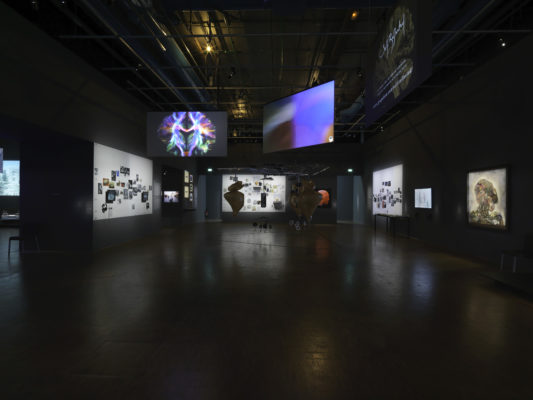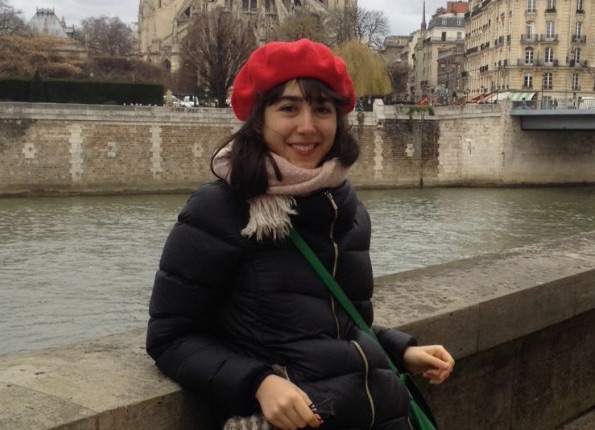Search
To search for an exact match, type the word or phrase you want in quotation marks.
A*DESK has been offering since 2002 contents about criticism and contemporary art. A*DESK has become consolidated thanks to all those who have believed in the project, all those who have followed us, debating, participating and collaborating. Many people have collaborated with A*DESK, and continue to do so. Their efforts, knowledge and belief in the project are what make it grow internationally. At A*DESK we have also generated work for over one hundred professionals in culture, from small collaborations with reviews and classes, to more prolonged and intense collaborations.
At A*DESK we believe in the need for free and universal access to culture and knowledge. We want to carry on being independent, remaining open to more ideas and opinions. If you believe in A*DESK, we need your backing to be able to continue. You can now participate in the project by supporting it. You can choose how much you want to contribute to the project.
You can decide how much you want to bring to the project.

Frédéric Migayrou, chief curator of architecture and design at the Mnam-CCI Centre Pompidou in Paris, gives us his point of view on the evolution of the museum sector after the pandemic.
Social distancing, mandatory face mask, previous reservations, predefined itineraries… These are some of the measures taken by museums after confinement. How will all this change the public’s experience?
The question is whether the logic of the museum of multitude is viable in the long term. The model of access to works of art will have to be reinvented, which will in turn change the notion of exhibition. This is a wager on the internal logic of museums and on the general management of tourist flows worldwide. What I would call a “pervasive” museum should be created; a museum with a much more important exploitation of the collection, a logic of communication and virtual access. The digital cultural offer would compensate for the simple traditional visit. Museums would not only exhibit the works but also conferences, shows, critical analysis… It would not only be a matter of making monographic, thematic or artistic-trend exhibitions but more critical and analytical ones. A part could be for free access and then subscriptions could be created for more privileged access, for specific audiences. This would not prevent the preservation of the traditional visit (that of the walking one), which was invented in the 18th century.
What other implementations could be proposed?
We could think about a form of virtual commission with the collaboration of the public, which would lead to the organizations of exhibitions; or perhaps a more active role for the university and researches or a greater access to documentation, available on the Internet, with debates and conversations around a theme or an exhibition. This would lead to a greater critical participation by the public, which would no longer be an anonymous tourist audience but an increasingly qualified one. To this end, the museum should be equipped with a production and broadcasting platform, a group of journalists – conservators and a television crew, a set, a filming system, etc. The idea is to make the museum permeable to the circulation of information, to use technology so that the museum becomes a media. It is not only a matter of accumulating works but of increasing the symbolic capital of the museum; its informative capital. There is an enormous diversification of information and that a museum like Pompidou is not doing this, is a real problem.

Frédéric Migayrou, curator of the exhibition Neurones, les intelligences simulées, Centre Pompidou, 2020 ©Anne-Fréderique Fer
Although you have to have the means to access it. Confinement has highlighted the digital divide…
People who do not have access to this type of technology are already socially marginalized by the current socio-economic and technological structure. This does not change anything; all these deficiencies of society are not a specific problem of the museum.
How will the pandemic affect the network of artists, galleries and collectors? Will it mean the end of globalization and a return to the local scenes at the time of acquisitions?
On the contrary. What there will be is a growth of the art market, an acceleration in the circulation of works and in online sales; the symbolic value of the works will be more important than the material value. What people will buy is a name.
Will the online art market be the solution to the cancellation of the next fairs?
For now, the fairs that have been cancelled are only the ones from autumn. However, the fairs are just an avatar of these new symbolic economies of works and to some extent there is nothing to see in them. In the end, the art market will not need them: when they are on the Internet, the fair will be constant.
Museums closed during confinement will have to face a decrease in revenue and state subsidies are decreasing. How to reach a healthy balance between public and private funding?
The economic crisis will only radicalize a necessary transformation of museums. They are no longer cultural visibility platforms that are subsidized publicly but economic instruments that are called upon to be profitable. Museums born or subjected to a liberal economic logic cannot be blamed for being affected by the crisis of liberalism. The Guggenheim in Bilbao, the MACBA in Barcelona… these museums created to change the cultural image of the city will go into crisis; it seems obvious to me that they will be affected economically, since they have been built for that purpose. The Reina Sofía and the Prado will not, because their cultural capital is much greater but that capital is either exploited or not. I think it has to be done. To invent economic logics other than the traditional ones and to the participation of the private sector seems very important to me. Also, digital technology could offer new possibilities. It could anticipate the end of the tourist museum model and create real cultural establishments.

View of the exhibition Neurones, les intelligences simulées, Centre Pompidou, 2020 © Audrey Laurans
(Featured Image: View of the exhibition Neurones, les intelligences simulées, Centre Pompidou, 2020 © Audrey Laurans)

Beatriz Sánchez Santidrián had always wanted to be a biologist but she grew up amidst books, records, films and exhibitions; a few days before enrolling at university she decided that what interested her most was Art History. Dreaming of the bohemian intellectuals of postwar Paris, she settled there. She hasn’t run into Beauvoir or Cocteau, but she’s still there. Still looking.
"A desk is a dangerous place from which to watch the world" (John Le Carré)